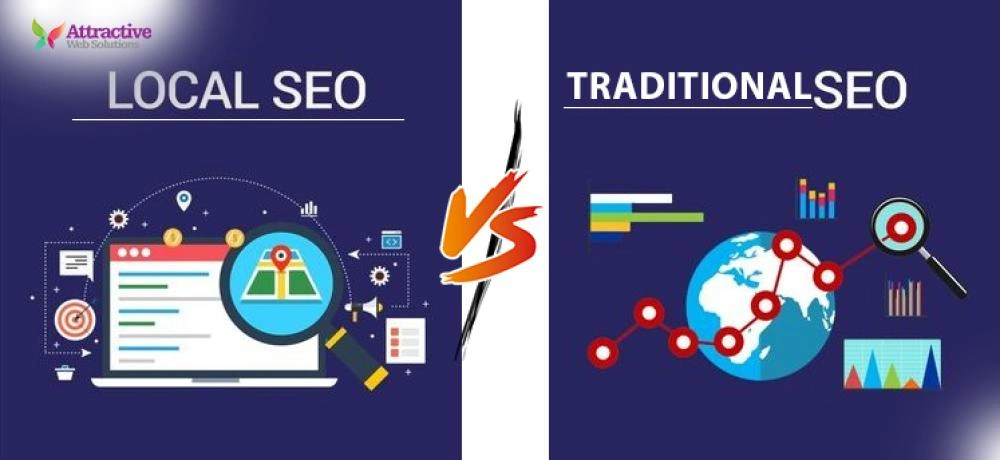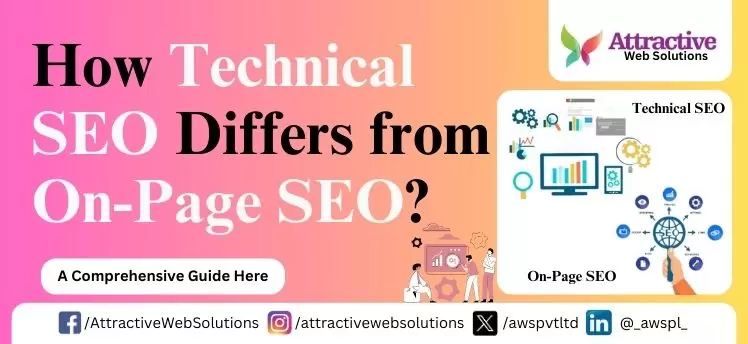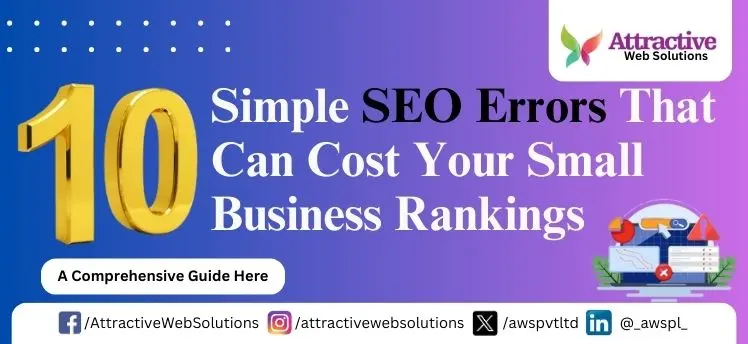In the digital age, Search Engine Optimization (SEO) is fundamental for any business seeking to establish a strong online presence. However, not all SEO strategies are created equal. There are different approaches, each tailored to specific goals, audiences, and geographic targets. Two prominent types are Local SEO and Traditional SEO. While both aim to improve search engine rankings and increase visibility, they differ significantly in scope, techniques, and intended outcomes.
In this post, we'll explore the key differences between Local SEO and Traditional SEO, examine why they matter, and help you determine which approach might be best for your business.
Understanding Traditional SEO
Traditional SEO—often referred to as "national" or "global" SEO—is the process of optimizing a website to rank higher in search engine results for broad, non-location-specific keywords. The main goal is to attract visitors from a wide geographic area, making it an ideal strategy for online-only businesses, e-commerce platforms, or those with a national or international customer base.
Traditional SEO Strategies Include:
- Keyword Research: Identifying high-volume keywords that potential customers use to search for products or services.
- Content Creation: Crafting informative, engaging, and keyword-optimized content like blogs, guides, and articles to attract organic traffic.
- On-Page Optimization: Enhancing the website’s structure, meta tags, headings, and images to improve search visibility.
- Link Building: Acquiring backlinks from authoritative sites to build domain authority and improve rankings.
- Technical SEO: Optimizing the site’s speed, mobile-friendliness, and structure to ensure search engines can easily crawl and index it.
Understanding Local SEO
Local SEO, on the other hand, focuses on optimizing a website to attract traffic from local searchers. This approach is ideal for businesses that operate within a specific geographic area, such as restaurants, local retailers, law firms, or service providers like plumbers and electricians. Local SEO helps businesses reach customers searching for products or services within a certain proximity to their location.
Key Components of Local SEO Include:
- Google My Business (GMB): Claiming and optimizing your GMB listing to improve your business’s visibility on Google Search and Maps.
- Local Citations: Ensuring your business name, address, and phone number (NAP) are consistent across local directories, social media profiles, and review sites.
- Customer Reviews: Encouraging positive reviews on platforms like Google, Yelp, and TripAdvisor to boost credibility and local rankings.
- Localized Content: Creating content that speaks directly to the needs and interests of local customers, such as blog posts about local events or guides to the area.
- Location-Based Keywords: Targeting keywords that include the business’s location, such as “plumber in Dallas” or “best coffee shop near me.”
Key Differences Between Local SEO and Traditional SEO
1. Geographic Focus
- Traditional SEO: Targets a national or global audience without focusing on a specific geographic area. It’s ideal for businesses that do not rely on local customers.
- Local SEO: Concentrates on a local audience, making it perfect for businesses that serve customers in a particular city, neighborhood, or region. Searches like “near me” or those with city-specific keywords fall under Local SEO.
2. Search Results Pages
- Traditional SEO: The main aim is to rank on the regular organic listings for relevant keywords.
- Local SEO: Focuses on appearing in the “Local Pack” or “3-Pack”—the group of three local business listings that show up for searches with local intent. Google Maps results are also vital for Local SEO.
3. Keywords and Search Intent
- Traditional SEO: Targets broader, high-volume keywords. Search intent can range from informational to transactional, depending on the keyword.
- Local SEO: Focuses on keywords with local intent, such as “[service] near me” or “[service] in [city].” The search intent is usually transactional, as the user is often ready to engage with a business nearby.
4. Google My Business Optimization
- Traditional SEO: GMB is not essential for Traditional SEO, as it is focused on a wider audience. Instead, businesses concentrate on on-page and off-page optimization.
- Local SEO: Google My Business is crucial. A well-optimized GMB profile is necessary for ranking in the Local Pack, and it provides critical information to local searchers, such as hours, directions, and contact information.
5. Link Building Strategy
- Traditional SEO: Acquiring high-authority backlinks from reputable websites to improve domain authority and credibility.
- Local SEO: Emphasis is placed on obtaining backlinks from other local businesses, directories, and organizations. For instance, a restaurant may benefit from backlinks from local food blogs, community sites, and local news sources.
6. User Experience Optimization
- Traditional SEO: Focuses on general user experience elements like site speed, mobile-friendliness, and easy navigation to cater to a broader audience.
- Local SEO: Prioritizes mobile optimization and easy access to contact information or directions. Local searchers often use mobile devices to find quick answers or visit a business, so the mobile experience is critical.
Why These Differences Matter
Understanding the distinctions between Local SEO and Traditional SEO allows businesses to make informed decisions on where to focus their resources for maximum impact. Here’s why these differences matter:
1. Aligning with Business Goals
- If your business relies on foot traffic or local customers, Local SEO is essential. It ensures that your business appears when customers search for services nearby.
- If you sell products or services online and serve a wider geographic area, Traditional SEO is more suitable as it attracts a broader audience.
2. Resource Allocation
- Knowing which SEO strategy aligns with your business goals helps you allocate your resources more effectively. Local SEO may require less content creation but more attention to local listings and reviews, while Traditional SEO may involve a heavier focus on content and link-building.
3. Increasing Visibility Where It Matters
- Local SEO ensures visibility in local searches, which often have high intent and can lead to faster conversions. Meanwhile, Traditional SEO builds brand awareness and credibility on a larger scale, which may contribute to longer-term customer engagement and loyalty.
4. Adapting to Changing Search Trends
- Voice search, mobile search, and zero-click searches are reshaping how people find information. Local SEO leverages these trends to meet local customers' needs directly. Traditional SEO, on the other hand, adapts to broader changes like featured snippets and in-depth articles.
How to Choose the Right SEO Approach
The best approach often depends on your business type, target audience, and geographic scope. Here are some scenarios to help you decide:
Service Area Businesses: If you run a business with a defined service area (e.g., a pest control company or landscaping service), Local SEO is ideal. It helps you attract customers in nearby neighborhoods who are ready to book your services.
Brick-and-Mortar Stores: For businesses that rely on foot traffic, such as cafes, retail stores, or salons, Local SEO is essential for driving in-store visits and attracting local patrons.
Online-Only Businesses: If your business operates solely online, Traditional SEO is the best fit. By targeting high-traffic keywords on a national or international level, you can attract a broader audience interested in your products or services.
Hybrid Approach: Some businesses can benefit from a combination of both Local SEO and Traditional SEO. For instance, a law firm with multiple offices across the country can use Traditional SEO to attract national clients while optimizing local pages for specific office locations.
Conclusion
Both Local SEO and Traditional SEO have their place in today’s digital marketing landscape. By understanding the unique aspects and strengths of each, you can craft a targeted strategy that aligns with your business goals and meets the needs of your target audience.
If you’re unsure where to start or need guidance on which SEO strategy is best for you, our team at Attractive Web Solutions is here to help. We specialize in creating customized SEO strategies that increase your online visibility and drive real results. Contact us today to schedule a consultation and take the first step towards optimizing your website for success in 2024!









0 Comments